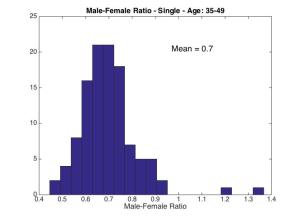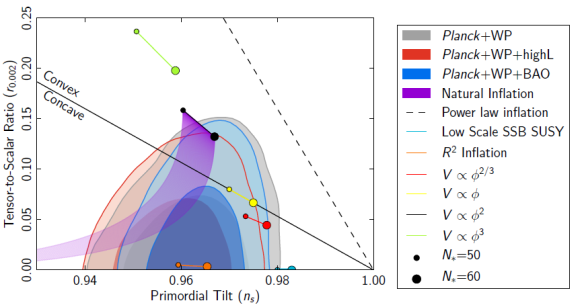The announcement of the potential discovery of the much-anticipated Higgs boson at the Large Hadron Collider (LHC) sent waves of excitement around the globe this month. The last – and probably the most important – missing piece of the standard model of particle physics appears to have fallen into place.
But, as the media dust settles, many readers will be left wondering: “what exactly is the Higgs?” – known colloquially as the `God particle’ – and “why should I care?”
First off, the Higgs boson is a sub-atomic particle. That means it is much, much smaller than an atom in size. It was detected by smashing known particles together at very high energies and using the resulting energy to produce, we believe, the Higgs particles out of thin air. These Higgs particles then decay to known particles in very characteristic patterns that we see as a signature of the Higgs’ fleeting existence, much like a criminal leaving fingerprints at a crime scene.
 Candidate Higgs collision in the Large Hadron Collider
Candidate Higgs collision in the Large Hadron Collider
Physicists have been quick to emphasise that they haven’t yet fully confirmed that what they have seen is actually the Higgs. So what is going on? Have they seen it or haven’t they?
This is best answered by analogy. Imagine your pet theory says that every night a new type of dark, giant rat, about half a meter long, will sneak into your garage at 9pm under cover of darkness. Your theory makes four definite predictions – it is a new type of rat, it is huge, it will come at 9pm and further, it is dark and hard to see. That night at 9pm sees you waiting expectantly in the garage. Suddenly you hear scurrying and you switch on the light only to see something big and dark disappear through a hole, but you don’t get a really good look at it.
Now there was definitely something there and both the size and shape were consistent with your giant rat theory. Moreover, whatever it was came exactly when your theory predicted, 9pm. But are you sure you have discovered this new type of rat? No, not really. It could be something else that looks like a giant rat. But for sure it couldn’t have been a glowing gnome, so you have ruled out some exotic possibilities.
That is the situation we are in now. The LHC has seen something and it is consistent with the predictions of our theory, the standard model, but it might be something much more exotic than the Higgs. Instead of a giant rat it might be a small dragon or something even more interesting.
So how does the LHC make new particles where none existed before?
Colliding particles together to make new particles is a bit like selling several ordinary cars and using the cash to buy a Ferrari. You convert mass (the cars) into cash (energy) and then back into mass (the Ferrari). So how much does a Higgs cost?
The key is Einstein’s famous equation E = mc2. This tells you how much energy you need to make your Higgs, which weighs about 100 times more than a proton. If you don’t have enough money, you can’t buy a Ferrari and if you don’t have enough energy, you can’t make a Higgs. This was the situation before the LHC. Humanity couldn’t put enough energy into the particles we were smashing together to make Higgs particles. Now we think we do.
This analogy fails however, to capture the true excitement of fundamental science. We can pop down to our local prestige car showroom or look at http://www.ferrari.com, but we don’t know what Nature’s range of luxury cars is. All we can do is make new theories with the knowledge that if we scrape enough money together, we get to create cars no one has ever seen before and thereby test our theories of the Universe. And that is exactly the story that has unfolded over the past 48 years.
In 1964 theorists speculated that the Higgs particle must exist and the LHC appears to have finally confirmed it. On the one hand, given everything we know about the standard model of particle physics, which has been proven right for thirty years, the Higgs had to be there. But checking that it actually is there is important. It’s like you awaken after a serious car crash and wiggle your toes. It feels like your feet are still there, but do you crane your neck to look at them just to make sure? Of course!
The particle is named for Professor Peter Higgs, one of the six people who can plausibly be called proud parents of the Higgs. Since the Nobel Prize cannot be given to more than three people, there are going to be two very disappointed people (unfortunately one passed away before the recent discovery). Science, like other parts of life, is not always fair in assigning credit.
So apart from retail therapy on a grand scale, why should you care about the Higgs?
The Higgs is the centerpiece of our current understanding of nature at the smallest scales and it claims to explain the answer to a simple yet profound question:
“what is mass?”
From Einstein’s theory of relativity we know that if a particle doesn’t have any rest mass it must travel at the speed of light. That would be bad for us because there would be no atoms and no life. Particles would pass like high speed ships in the night. But what is this rest mass and where does it come from? Why does an electron, for example, have any mass at all and why does it weigh nearly 200,000 times less than the top quark, the most massive known particle?
The mantra is that the Higgs gives mass to all particles, hence the joke that the ‘God Particle’ must be Catholic. But if the Higgs is the puppet master that determines how much each particle weighs, how does it pull the strings?
Perhaps it is easiest to think of mass as something that resists an object from accelerating. It is far easier for Rodger Federer to serve a tennis ball at 160 km/h than it would be to do the same with a 7 kg shot put.
So to explain mass, we need only to find a very natural way to resist acceleration. The Higgs field, which permeates all of space, does this. It connects to particles via a force that is described mathematically in a very similar way to the action of a rubber band. If you try to stretch a rubber band you have to accelerate the ends of the band and it resists you. That resistance is very much like mass.
The strength of the virtual rubber band connecting the Higgs to each type of particle is different and voila! each different type of particle has a unqiue mass. Electrons are lighter than quarks because their connection to the Higgs is weaker. So in a sense, in the standard model, “mass” is an illusion perpetuated by the Higgs field which is pulling all the strings.
One of the amazing implications of this view is that masses of particles can change if the value of the Higgs field changes. Indeed, the standard model suggests that in the first second or so after the Big Bang, the Higgs field was zero, all its rubber band connections to other particles were slack and hence all particles were massless and traveled at the speed of light.
Let’s try an analogy to tease out some intuition for this radical idea. Imagine you join a new startup company. They don’t have much money so they pay you in shares instead, with the restriction that you cannot sell the shares until they say you can. This makes the shares basically worthless in the meantime. For a long time the company carries on like this, and each one of the new employees gets a different number of shares. Some have 42, others 6400 and so on. It doesn’t really matter how many shares everyone has at this stage, they don’t have any value in the sense that they can’t be sold to someone on the street.
But one day the company is listed on the stock market, just like Facebook did recently, and suddenly you can sell each of your shares at a set value. Suddenly everyone’s portfolio has made money but the value of each portfolio is different. People with a lot of shares are rich, others are not, but everyone has made some money. In this analogy the stock price plays the role of the Higgs field and the value of each person’s stock portfolio plays the role of each particle’s mass, which is unique to it.
Confirming the radical view of mass that goes with the Higgs is obviously important and exciting from a fundamental point of view. But there are other reasons the Higgs is important too. Apart from mass, one of the fundamental quantum properties of a particle is its “spin”. This doesn’t really have a nice everyday interpretation so just think of it as a label for now. But it is key to understanding why it is called the Higgs boson.
What is a boson? Bosons, named after Indian physicist Satyendra Bose, are fundamental particles with spin equal to 0, 1, 2 etc… It turns out all the forces of nature are described by such particles. On the flip side, all matter – like the electron, quarks, protons and neutrons making up our bodies and cream cheese bagels – is made of particles with spin ½. The Higgs is a boson because we believe it has spin 0. If the Higgs is confirmed, it will be the first spin 0 particle ever discovered. All other known bosons have higher spin.
Before now we had never seen any spin-0 particles, which made people justifiably skeptical about their existence. It turns out that spin-0 particles are very useful for something completely different: making the universe expand faster and faster, something that is needed both in the very early universe and today. Indeed, the 2011 Nobel Prize in physics went to the discovery that the cosmos is expanding in such an accelerating fashion, something which surprised everyone. Confirming the spin-0 nature of the Higgs would give strong circumstantial support to the idea that cosmic acceleration is driven by bosons.
So will the LHC shut down once it confirms the properties of the Higgs? Definitely not. In fact, it is still only running at half power and the real hope is that when it ramps up fully we will find new physics that will guide us in building a better, sexier model of reality at the smallest possible scales. If the Higgs is the Ferrari we were expecting, what are the as yet unknown exotics waiting to be predicted and discovered? It is the joy of physics that the human mind can use creativity and mathematics as lantern and guide to predict some truth about the Universe that is perhaps only found to be true 50 years later.
In 1973 Jacob Bronowski wrote
Physics in the 20th century is an immortal work. The human imagination working communally has produced no monuments to equal it, not the pyramids, not the Iliad, not the ballads, not the cathedrals. The men who made these conceptions one after another are the pioneering heroes of our age.
It is now truer than ever.
Some lovely animations of the Higgs collisions are available at the CMS experiment site.
1929 words
Copyright Bruce Bassett









